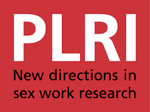HIV/AIDS infection is a serious threat to the health and welfare of India. HIV/AIDS and sexually transmitted infections (STI) are primarily propagated through heterosexual intercourse in India. Sex workers having multiple partners are considered to be conduits of virus transmission. Hence interventions targeting sex workers form a significant part of India’s effort to curb the HIV/AIDS pandemic within its borders.
The Sonagachi Project is a HIV/AIDS intervention program in India that targets sex workers. The initiative is being undertaken in a red light district of Calcutta, India. The district, which houses more than 50,000 sex workers, is the largest of its kind in South and South-East Asia. The project is spearheaded by the sex workers themselves, who act as peer outreach workers, and there are no external organizations involved. Statistics from UNAIDS show a significant drop in HIV/AIDS prevalence rate and significant increase in condom usage in Sonagachi after the project was implemented. The project achieved results like unionization of the sex workers, and formation of micro-credit societies and vocational training centers.
The different facets of the Sonagachi Project were examined in the current dissertation. The articulation of trafficking and sex work in the formulation of global HIV/AIDS policy documents was assessed to understand the relationship between trafficking and sex work. The Sonagachi Project’s stance on redefining sex work, legalization of sex work and rejection of rehabilitation propositions was explored. Environmental and structural barriers to health were analyzed and the impact of the contextualization of sexual health behavior on HIV/AIDS intervention initiatives studied by examining the case of the Sonagachi Project . The application of community mobilization as a strategic intervention method in HIV/AIDS harm reduction and awareness was explored by assessing the strategies of the Sonagachi Project . Finally the participatory framing of health discourse and practice in the Sonagachi Project was analyzed.
For my dissertation I performed in-depth interviews of 37 sex workers and 5 project workers in Sonagachi . I reviewed policy documents of global aid organizations and project documentation from the Sonagachi Project such as research papers, internal project reports and unpublished manuscripts produced by the sex workers’ union, and results of surveys performed by the sex workers’ union and non-governmental organizations. The implications of the dissertation findings will extend beyond the red light district of Calcutta and provide a useful paradigm of sustainable intervention among historically marginalized populations.
(abstract author’s own)
Theme:
Author:
Satarupa Dasgupta

